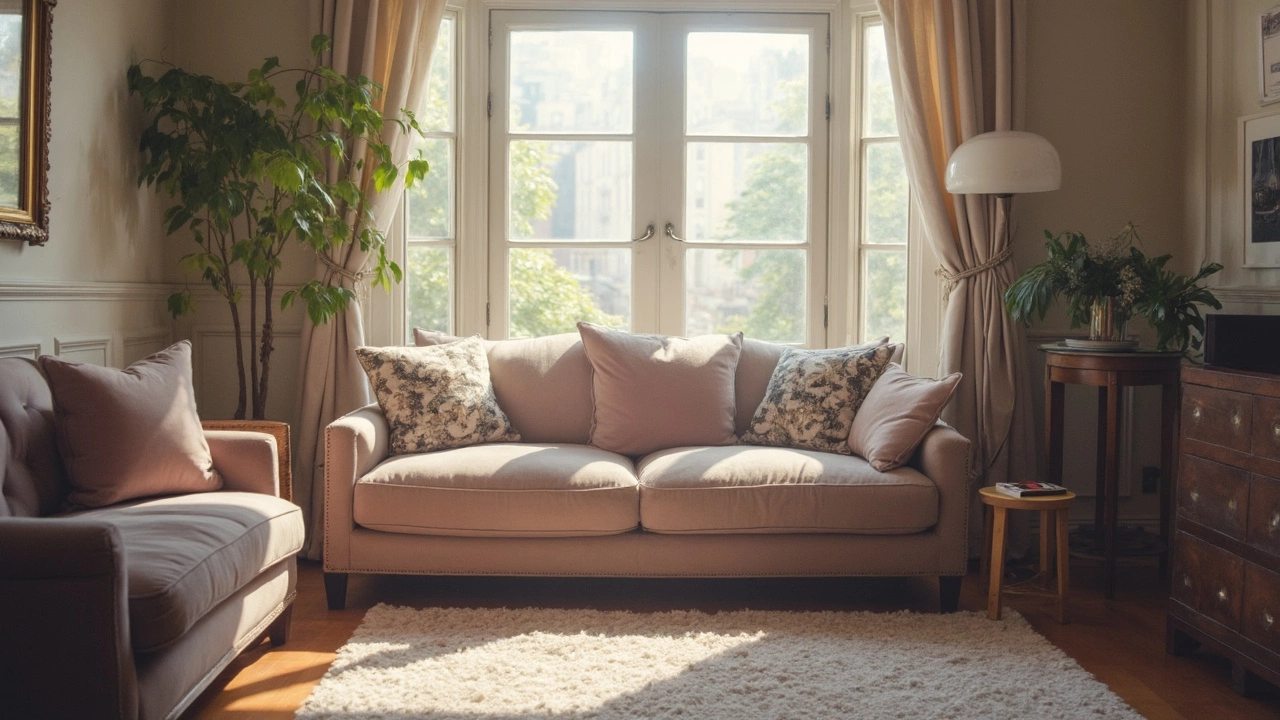Placing a sofa in the wrong spot can mess up your room's vibe and functionality. Avoid common mistakes like placing a sofa right in front of windows or blocking pathways. Discover why positioning is key to comfort and how lighting and traffic flow influence sofa placement. Learn practical tips to make the best out of your space while keeping it stylish.
Furniture Arrangement: Simple Tips to Make Your Room Work
Got a room that feels cramped or just doesn’t look right? You’re not alone. A few smart moves with your furniture can change the whole vibe without buying anything new. Below are easy, no‑fuss ideas you can try right now.
Start with a Floor Plan
Before you lift a sofa, grab a sheet of paper or use a free phone app and draw the room’s shape. Sketch the doors, windows and any fixed items like radiators. Then cut out cardboard pieces the size of your biggest items – a couch, a dining table, a bookshelf – and play with them on the floor plan. This lets you see how each piece fits before you start moving heavy stuff.
Key Placement Rules
1. Anchor the main piece. In a living room the sofa is usually the anchor. Place it opposite the focal point – TV, fireplace or a big window – and leave at least 30 cm of clearance for traffic.
2. Keep traffic lanes clear. Aim for a 90 cm pathway around the room so people can walk comfortably. Anything that blocks this flow feels cluttered.
3. Use the “float” technique. Instead of pushing furniture against walls, try floating it a bit. A floating sofa with a side table on one end creates a more intimate conversation zone.
4. Balance large and small items. Pair a bulky armchair with a slim coffee table or a tall bookshelf. The contrast keeps the room from feeling heavy.
5. Think vertically. If floor space is limited, add tall shelves or wall‑mounted storage. It draws the eye up and frees up the floor.
These rules work for any room – bedroom, office or even a small hallway. Adjust the numbers to fit your space, but the ideas stay the same.
Another quick win is to group furniture in odd numbers. A set of three chairs or a pair of side tables feels more natural than an even‑numbered stack. And don’t forget to leave a little breathing room around each piece; empty space makes the room feel bigger.
Finally, test your layout for a day or two. Live with it and see if you keep tripping over a table leg or if the conversation feels natural. Small tweaks – moving a chair a few inches or swapping a lamp – can make a huge difference.
With these simple steps you’ll get a room that flows, looks balanced and feels inviting. No need for a costly redesign – just a bit of planning and a few smart moves.
